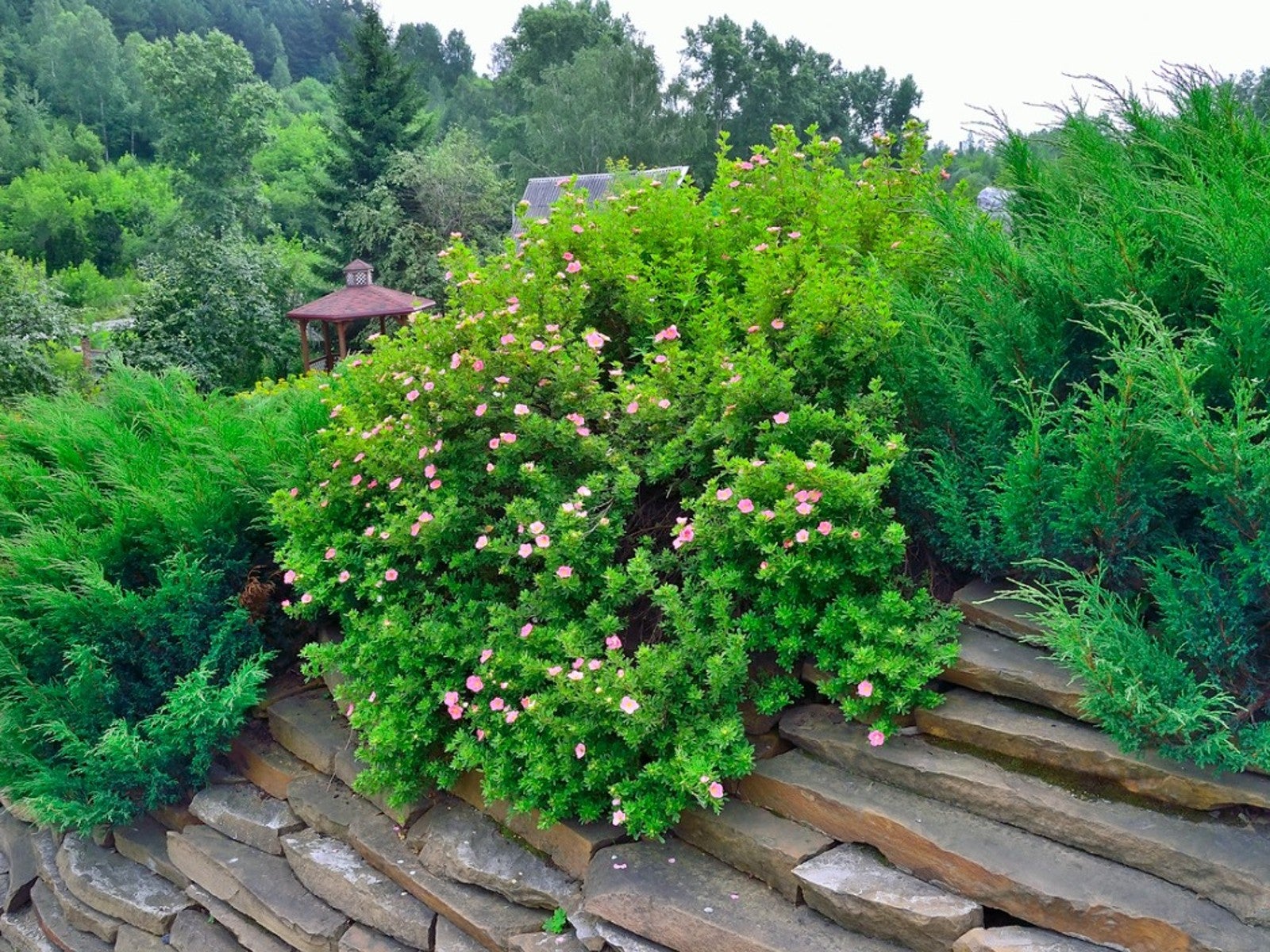Drought Tolerant Native Shrubs For Xeriscaping


Xeriscape gardens took the spotlight a few years back, and their popularity has grown year after year. They are gardens that focus on drought-resistant plants and use special techniques to conserve water. Since much of the United States and some other nations remain in drought conditions, xeriscape bushes are still very desirable additions to the garden.
Drought Tolerant Bushes
With climate change concerns, unpredictable droughts and high energy prices across the country, most gardeners are struggling to conserve water usage in the landscape. One of the best ways to do this is to select drought-tolerant plants.
Drought-tolerant plants need water to survive, just like all plants. But they have adapted to low-water conditions by developing features that minimize their water use. For example, some have developed smaller leaves or needles that require less water, or even reduce leaf area with large spaces between leaf lobes.
A few drought-tolerant bushes to consider include the bottlebrush buckeye, a deciduous shrub with a mounded, multi-stemmed habit that produces white flowers in sun or shade. Bush cinquefoil is a versatile bush that tolerates heat, drought and various soil types, offering showy yellow, white or orange flowers from early summer through frost.
Native Bushes
Native bushes are those that grow in the wild, without the need for human maintenance. Since these plants are on their own, they usually have developed adaptations for periods when rainfall is low. That makes most native bushes low maintenance, drought-tolerant shrubs.
One adaptation seen on native bushes is leaf coverings that contain a heavy accumulation of wax that conserves the plant’s moisture. White fir is one plant that has developed this type of drought-tolerant leaf. Fine hairs on the leaves of plants like silver sage serve the same purpose by holding and trapping moisture at the leaf surface.
Still other native plants prepare themselves to survive drought by extending their roots. Drought-tolerant false blue indigo, for example, has deep roots that can intake moisture from far below the soil surface. That allows them to use today the moisture that fell days or weeks before.
Gardening tips, videos, info and more delivered right to your inbox!
Sign up for the Gardening Know How newsletter today and receive a free copy of our e-book "How to Grow Delicious Tomatoes".
Native Shrubs for Dry Shade
It just makes sense to use native shrubs when you need to plant in dry shade. You can find more than a few native bushes that are drought-tolerant and grow well in shade. The beauty of native shrubs is that they require very little effort once established.
What are some of the top choices? You should consider California spice bush, which thrives with little moisture in partial shade and produces maroon-red blossoms and rich green foliage. Another one to look at is bush anemone, offering camellia-look-alike blossoms and evergreen, glossy leaves. It does well in partial shade in hot climates with moderate water. Bush or sticky monkey flower also thrives in partial shade with little water and produces bright, tubular flowers.

Teo Spengler is a master gardener and a docent at the San Francisco Botanical Garden, where she hosts public tours. She has studied horticulture and written about nature, trees, plants, and gardening for more than two decades. Her extended family includes some 30 houseplants and hundreds of outdoor plants, including 250 trees, which are her main passion. Spengler currently splits her life between San Francisco and the French Basque Country, though she was raised in Alaska, giving her experience of gardening in a range of climates.
-
 Types Of Tomatoes Explained: Explore The Many Wonderful Shapes, Colors, Flavors, & Best Uses
Types Of Tomatoes Explained: Explore The Many Wonderful Shapes, Colors, Flavors, & Best UsesThe world of tomato varieties is vast and fascinating. Learn about the key types to grow in your garden, tailored to your preferences and space.
By Amy Grant
-
 Try The Trend – Turn Any Bed Into A Keyhole Garden With This Clever In-Ground Composter
Try The Trend – Turn Any Bed Into A Keyhole Garden With This Clever In-Ground ComposterKeyhole gardening is an efficient and sustainable practice that saves space. Get started on this DIY project quickly and easily with an in-ground composter.
By Bonnie L. Grant